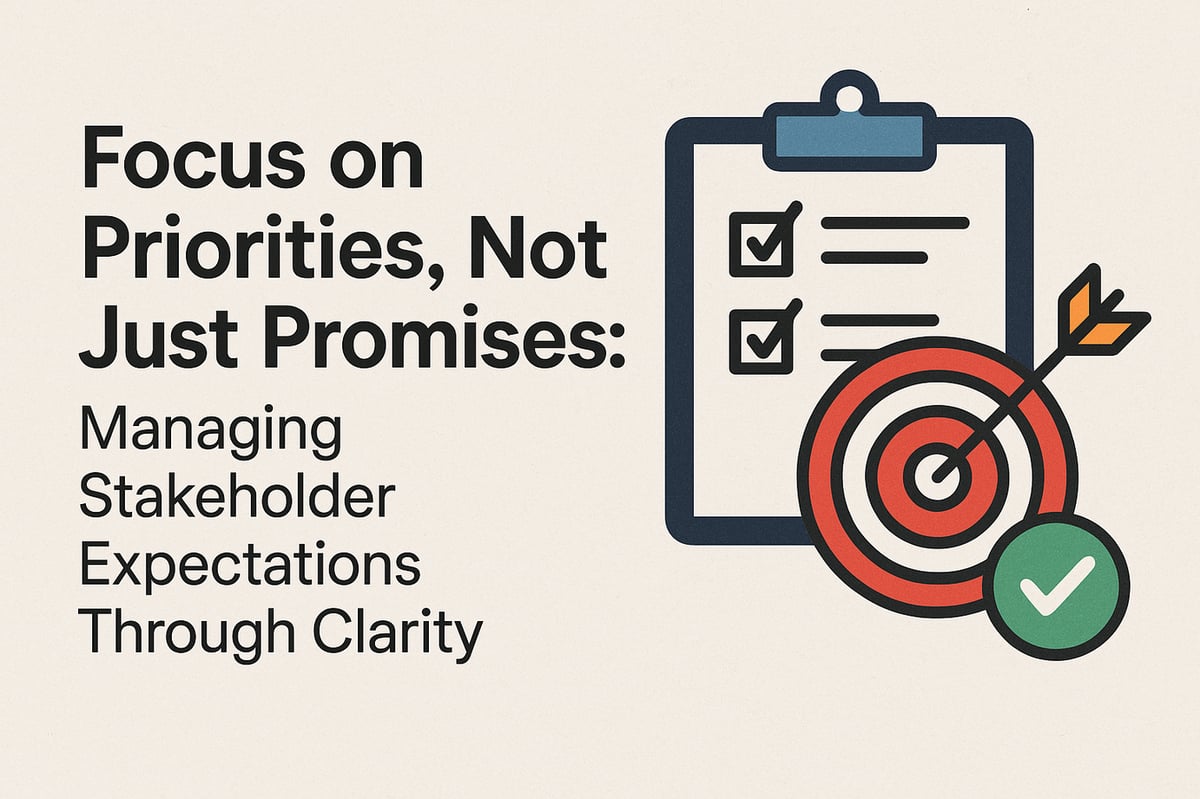
It’s easy to fall into the trap of saying “we’ll try” or “it should be done by next sprint.” But vague commitments only create confusion, friction, and broken trust when things shift.As engineering leaders, one of the trickiest balances we need to strike is between the urgency of stakeholders and the reality of our teams. It’s easy to fall into the trap of saying “we’ll try” or “it should be done by next sprint.” But vague commitments only create confusion, friction, and broken trust when things shift.
Stakeholders aren’t just asking for dates. They’re looking for certainty, alignment, and clarity on what actually matters. Your job isn’t to promise everything. It’s to help everyone understand the trade-offs behind each priority and how those trade-offs support the business.
Behind every deadline request is a deeper need:
The best leaders don’t just provide answers. They frame the problem in terms of business context, value, and constraints. That means shifting conversations from “when will it be done” to “what problem are we solving, and what’s the best way to solve it?”
Misalignment often comes from mismatched expectations. You can prevent a lot of future confusion by clearly communicating how your team works:
If you don’t define the rules, stakeholders will invent their own. And often, those rules will assume you’re always on-call for whatever they need next.
A helpful tactic is to run short onboarding sessions or write internal “How we work” guides for key cross-functional partners. The more predictability you give them, the more trust you build.
One of the most valuable things a leader can provide is clarity of focus. When everything feels like a priority, teams drown. When leadership tries to please everyone, stakeholders feel misled.
As a leader, your role is to say:
This level of transparency shows you’re thinking systematically—not just reacting to pressure. If you don’t actively manage this, the loudest voice in the room tends to win, often at the expense of more strategic work.
Use clear artifacts to support this:
When people can see where the energy is going, they’re more likely to engage constructively—even if their request isn’t prioritized.
Let’s say you’ve got three teams asking for your engineering time. All three requests are valid, but you don’t have infinite people.
Instead of defaulting to timelines (“we can maybe get to this in two weeks”), reframe with priority and trade-off language:
“If we take on Feature B now, we’ll need to pause the performance work we’ve started. That likely delays our platform stabilization work by another sprint. Does that trade-off make sense based on what’s most critical for the business?”
Now you’re inviting your stakeholders into the prioritization process. They stop thinking of you as a blocker, and start seeing you as a partner.
Managing expectations isn’t about lowering the bar. It’s about creating alignment. That starts by teaching stakeholders how to engage with your team:
When you teach stakeholders how to work with you, they start bringing better asks, not just louder ones.
No one likes surprises—especially not stakeholders who depend on your team to hit their goals.
Good communication rhythms create stability:
And when something’s at risk, say it early. A simple message like:
“Heads up: The search API rollout might slip to next sprint due to some unexpected integration issues. We’ll confirm by Friday once we know more.”
Proactive updates show ownership. Silence creates anxiety, which usually turns into micromanagement or executive escalations.
Stakeholders don’t need you to be perfect. They need you to be predictable. That means:
Inconsistent delivery breaks trust, but so does silence. Make it easy for people to know where things stand. That’s what true leadership looks like.
Stakeholders don’t need every feature tomorrow. They need to trust that what you said will happen, actually happens—or if it doesn’t, they’ll hear about it right away with a plan.
Trust is built through consistency and clarity, not through heroics. Resist the urge to chase every shiny object or bend to every request. That’s not leadership—it’s instability.
Instead, make it your goal to be the most predictable org in the company. Predictability builds leverage. When people know they can count on your word, they stop second-guessing and start collaborating.
Good leadership isn’t about having all the answers. It’s about making priorities clear, trade-offs explicit, and expectations grounded in reality—not wishful thinking.
Stakeholders don’t just want faster shipping. They want certainty. If you can’t give them that through guarantees, give it to them through clarity.
Find out if MentorCruise is a good fit for you – fast, free, and no pressure.
Tell us about your goals
See how mentorship compares to other options
Preview your first month
